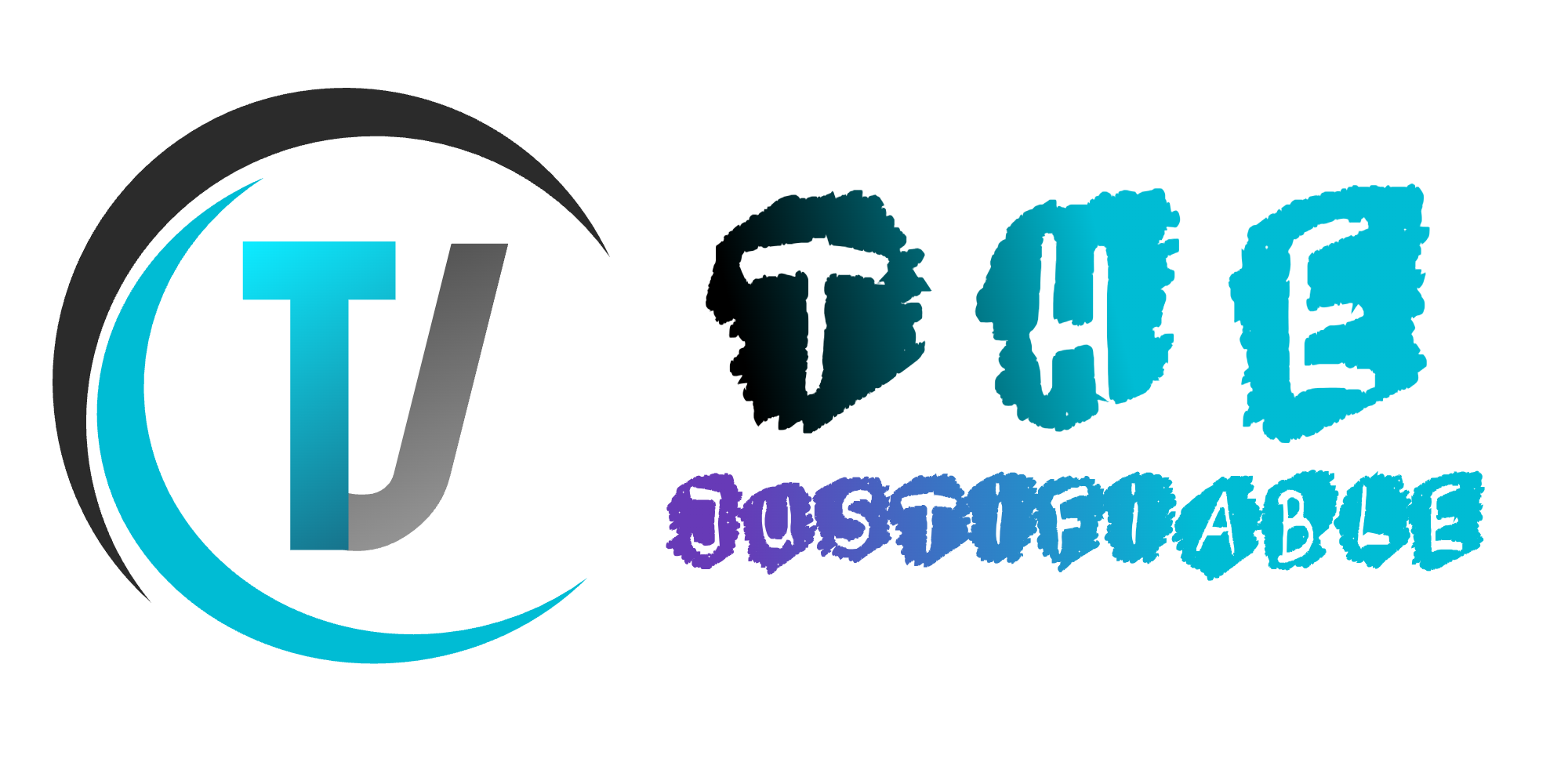Table of Contents
Ryter Me—what is it, and how can it revolutionize the way you create content? Have you ever struggled with writer’s block, tight deadlines, or the never-ending task of optimizing for SEO? If so, you’re not alone! Like many writers, I was searching for an efficient way to streamline my content creation without sacrificing quality. That’s when I discovered Ryter Me, a tool that completely transformed my writing workflow.
In this article, I’ll take you through the challenges I faced, how Ryter Me helped overcome them, and the game-changing results it delivered. Ready to find out if it can do the same for you? Let’s dive in!
Understanding Rytr and Its Core Features
Before diving into how Ryter Me transformed my content creation process, it’s essential to understand its core functionalities and what makes it such an effective tool. This section will help you grasp the basics, its standout features, and how it compares to traditional methods of content creation.
What is Ryter Me?
Imagine having an assistant who can generate ideas, structure articles, and help you refine content without missing deadlines. That’s essentially what Ryter Me brings to the table, but it’s much more than just a simple AI writing tool. At its core, it’s designed to take the stress out of content creation by blending AI technology with natural language generation. Whether you’re working on blog posts, social media content, or long-form articles, Ryter Me adapts to your unique writing needs.
One of the things that really impressed me when I first tried Ryter Me was its intuitive interface. Unlike other complex AI tools that require a steep learning curve, Ryter Me feels user-friendly from the get-go. As you type in prompts or keywords, it quickly generates coherent, topic-relevant drafts, which can be edited and optimized further.
Think of it as a collaborative writing partner. It doesn’t just spit out robotic sentences—it creates drafts that reflect human-like creativity, making it perfect for writers who need help getting started or polishing their final content.
Core Functionalities That Set Ryter Me Apart
What makes Ryter Me different from other AI tools on the market? Let me break down some of its standout features that caught my attention.
- Customizable Content Generation: One of its defining traits is the ability to customize content to fit your writing tone, style, or brand voice. This isn’t just generic output—it’s tailored content that feels authentic.
- SEO Integration: It goes beyond writing—it helps optimize your content for search engines. By analyzing keyword placement and ensuring the right density, Ryter Me increases your chances of ranking higher on search engines.
- User-Friendly Templates: Whether you’re creating a product description or a long-form blog post, Ryter Me offers pre-built templates to save time and effort.
- Grammar and Readability Enhancements: It doesn’t just generate content—it refines it. Built-in checks help improve grammar, sentence structure, and overall readability, reducing the need for extensive edits.
These features work together seamlessly, helping me achieve quality content faster without compromising on creativity or effectiveness. The customization options, in particular, made a huge difference in how I produced work tailored to different clients and audiences.
Comparing Ryter Me to Traditional Content Writing Tools
If you’re used to creating content manually or relying on older tools like simple grammar checkers or basic writing assistants, you may be wondering: What makes Ryter Me worth the switch?
Traditional writing tools typically focus on singular tasks—spell check, plagiarism detection, or grammar improvements. They don’t offer the level of creative brainstorming or structured content generation that Ryter Me provides. With older tools, writers still face hurdles like ideation blocks and SEO challenges.
I used to spend hours searching for keywords, structuring outlines, and making manual edits. But with Ryter Me, the entire process feels like a partnership between human creativity and AI efficiency.
Here are key differences:
| Feature | Traditional Tools | Ryter Me |
| Content Generation | Basic templates or manual effort | AI-powered, customizable content drafts |
| SEO Optimization | Requires separate tools | Built-in keyword optimization |
| Grammar Assistance | Limited to basic corrections | Advanced checks for flow and readability |
| Time Efficiency | Lengthy manual process | Rapid content generation and editing |
Switching to Ryter Me allowed me to reduce writing time by nearly 40%, which was a game-changer when juggling multiple deadlines. The integrated SEO features meant fewer back-and-forth revisions, and the AI-generated drafts gave me a head start on every project.
The Role of Ryter Me in Modern Content Creation
As content creation continues to evolve, Ryter Me stands out as an essential tool for writers looking to balance creativity and efficiency. Its ability to streamline writing, customize outputs, and optimize for SEO makes it indispensable for producing high-quality, engaging content.
How AI Writing Enhances Productivity
Many of us know the struggle—deadlines closing in, ideas running dry, and countless hours spent trying to perfect a draft. That’s where Ryter Me steps in, redefining productivity for content creators. AI-driven writing isn’t about replacing humans; it’s about complementing their strengths and cutting down time-consuming tasks like research, outlining, and editing.
Think about the time it takes to brainstorm blog topics or draft email campaigns. With Ryter Me, these processes become faster and more efficient because the AI generates content ideas and first drafts within seconds. Instead of spending hours searching for the perfect opening, you can start with a framework and tweak it based on your needs.
Another productivity boost comes from the tool’s real-time editing suggestions. I noticed that as I used Ryter Me, it helped me avoid common mistakes like awkward sentence structures or overused words. It didn’t just point out errors—it showed me how to fix them, improving my writing speed and overall output quality.
For writers juggling multiple projects, this efficiency is a lifesaver. Instead of wasting precious hours polishing drafts manually, you can focus on enhancing key points and personalizing content for your audience.
Expert Tip: Set time limits for each stage of the writing process when using Ryter Me. This keeps you focused and ensures you’re not over-relying on the AI to do all the work.
Customization and Flexibility with Ryter Me
One of the things I appreciate most about Ryter Me is its flexibility. Unlike generic writing tools that offer static templates, Ryter Me allows you to tailor content based on tone, audience, or purpose. Whether you’re creating a formal business proposal or a conversational blog post, you can adjust the settings to match your needs.
For instance, when I write for clients with different brand voices, I can customize outputs by giving clear instructions to the AI. Let’s say I need a fun and engaging product description—Ryter Me generates playful, punchy copy without losing the core message. On the other hand, if I require a more technical tone for an industry report, the AI shifts gears seamlessly.
This adaptability has made it easier for me to work with diverse clients while maintaining consistency. No longer do I need to start from scratch or worry about mismatched tones. With Ryter Me, the content aligns perfectly, saving me time on rewrites.
Another standout feature is the ability to modify the level of detail. For example, you can request short summaries for social media or in-depth explanations for long-form articles. This level of control means I’m always delivering content that meets the brief without overcomplicating things.
The Value of SEO-Optimized Content with AI Tools
If you’re a content creator, you understand how crucial search engine optimization (SEO) is to getting your work noticed. However, optimizing content can be a headache—finding the right keywords, maintaining readability, and ensuring proper placement is often tedious. That’s where Ryter Me shines by simplifying SEO without sacrificing creativity.
When I first started using Ryter Me, I was skeptical about how well an AI tool could handle SEO. But to my surprise, it consistently produced drafts that featured natural keyword integration, optimized subheadings, and strong calls to action. This made my job as a writer much easier, as I didn’t have to manually check for keyword density or awkward phrasing.
One of the tool’s most impressive features is its ability to balance SEO requirements with reader engagement. While many AI tools tend to “over-optimize” content, making it feel robotic, Ryter Me creates drafts that flow naturally. Keywords blend seamlessly into sentences, and the overall structure remains engaging.
It also helps optimize meta descriptions and titles, ensuring they are concise, clickable, and search engine-friendly. Thanks to this, I noticed an improvement in organic traffic and search visibility across several projects.
Best Practice: Review AI-generated SEO suggestions manually. While Ryter Me does a great job, adding your personal touch to headings and descriptions can make them even more compelling.
Why I Chose Ryter Me Over Other AI Tools

Choosing the right AI writing assistant wasn’t an easy task for me, but Ryter Me quickly stood out. I needed a tool that could address my specific challenges, align with my content goals, and deliver real value without inflating costs. Here’s why I made the switch.
Identifying My Content Creation Challenges
Before I discovered Ryter Me, I was constantly battling common roadblocks that many writers face. Deadlines felt suffocating, brainstorming took forever, and keeping up with SEO requirements felt like a separate job altogether. I remember sitting at my desk, staring at a blank page, hoping an idea would magically appear. If that sounds familiar, you’re not alone.
One of my biggest frustrations was dealing with writer’s block, especially when juggling multiple projects. There were days when creativity simply didn’t flow, and even when it did, I spent hours refining drafts or fixing structural issues. As a freelance writer handling everything from blogs to social media content, this inefficiency was dragging me down.
I also found SEO optimization exhausting. Manually researching keywords, checking density, and writing meta descriptions often felt like a chore. While I tried using various tools to help, they either lacked integration or provided generic suggestions that didn’t fit my writing style.
Beyond that, scaling content production was a nightmare. If I took on more work to boost income, the quality often suffered. I knew I needed help, but it had to be a solution that respected my voice, not just generate generic content.
Tip for Overcoming Roadblocks: If you’re facing writer’s block, try breaking the task into smaller chunks. Start with an outline or rough draft, even if it feels incomplete.
How Ryter Me Aligned with My Content Goals
I didn’t just need any AI tool—I needed one that fit seamlessly into my workflow while allowing me to maintain creative control. Ryter Me did exactly that. It wasn’t about replacing my voice but amplifying it, which was critical to me as a writer.
I had specific content goals: deliver high-quality work, improve SEO performance, and scale production without compromising creativity. What immediately stood out with Ryter Me was its ability to offer personalized outputs based on clear instructions. Whether I wanted a conversational tone or a more professional style, the tool adapted effortlessly.
The customization features were a game-changer. I could provide a brief prompt, and the AI would generate a draft that wasn’t just relevant but felt like something I could have written myself. I appreciated that it didn’t produce stiff or robotic-sounding content. Instead, the suggestions felt natural and aligned with my voice, making edits smoother and faster.
Another reason it worked so well was its SEO integration. Instead of jumping between tools for keyword research or meta descriptions, I could handle everything in one place. The drafts it provided were not only optimized for search engines but also engaging enough to hold a reader’s attention—an often tricky balance.
Cost-Benefit Analysis of Using Ryter Me
Investing in AI tools can feel risky, especially if you’re unsure whether they’ll deliver value. I spent a lot of time weighing the costs of Ryter Me against the potential benefits, and here’s what I found: it was worth every penny.
Let’s start with productivity gains. Before Ryter Me, I spent hours drafting and editing content manually. But after integrating it into my process, I cut down writing time by nearly 40%. Instead of spending three hours on a 1,000-word article, I could complete it in under two, freeing up time for other tasks like research or client outreach.
Then there’s the cost of hiring additional help. As my workload increased, I considered hiring a freelance editor or assistant to manage drafts and perform SEO checks. But Ryter Me eliminated that need. With its built-in grammar correction, readability suggestions, and keyword optimization, I didn’t need to outsource those tasks. This saved me both time and money.
Another factor was long-term performance. Investing in Ryter Me wasn’t just about short-term gains—it was about improving SEO and driving organic traffic, which could lead to more opportunities down the road. Since incorporating it into my content strategy, I’ve seen measurable improvements in search rankings and engagement rates.
Best Practice: Track your time before and after using an AI tool like Ryter Me. If it’s saving you hours and increasing output, you’ll know the investment is paying off.
The Initial Transition: Challenges and Solutions
Starting with a new tool like Ryter Me can feel overwhelming, especially when you’re used to traditional content creation methods. In this section, I’ll share my first experience with the platform, the early challenges I faced, and how I found solutions that helped me unlock its full potential.
My First Impression of Ryter Me
I’ll be honest—when I first tried Rytr, I wasn’t sure what to expect. I had tested AI writing tools before, and most left me unimpressed. They either generated stiff, formulaic content or required so much manual tweaking that it defeated the purpose. But Ryter Me felt different.
What stood out was how intuitive the interface was. Within minutes of creating my first prompt, I had a rough draft ready to edit. It wasn’t perfect, but it had structure, creativity, and direction—all things that are hard to get right on the first try. I remember thinking, “This is what I’ve been looking for.”
Unlike tools that overwhelm you with settings and technical jargon, Ryter Me offered a clean interface and simple controls. I didn’t feel like I had to take a crash course just to understand how it worked. That first draft felt like a collaborative effort, where the AI provided a strong starting point, and I could polish it with my personal touch.
Tip for First-Time Users: Don’t expect perfection from the first draft. The key is to treat it as a creative partner, not a replacement for your input.
Initial Setbacks and How I Overcame Them
No transition is without its bumps, and my experience with Ryter Me was no exception. Initially, I struggled to get the AI to understand my specific tone. Some drafts felt generic, and there were times when the content didn’t hit the mark. At first, this was frustrating. How could an AI adapt to my style when it wasn’t “me”?
After some trial and error, I realized the problem wasn’t the tool—it was how I was using it. I wasn’t being specific enough in my prompts. My instructions were vague, and as a result, the AI produced content that lacked depth. Once I started giving clearer directions, such as specifying the tone, target audience, and key points, the output improved dramatically.
Another challenge was trusting the AI. I had a habit of rewriting entire sections, thinking I could do it better. But over time, I learned to trust the process. Instead of scrapping the AI’s suggestions, I used them as building blocks. This saved time and allowed me to focus on refining the content rather than rewriting it from scratch.
Learning the Features: Tips for New Users
Getting the most out of Ryter Me requires understanding its features and how to tailor them to your writing needs. Here’s what worked for me as a beginner:
- Start Small: My first mistake was trying to write long-form articles right away. I recommend starting with short-form content like product descriptions or social media posts. This helps you understand how the AI processes prompts and generates output.
- Explore Templates: Ryter Me offers built-in templates for different types of content, including blogs, emails, and website copy. I found the templates to be a huge time-saver. Instead of starting from scratch, I could plug in my details and let the AI handle the structure.
- Use the Editing Suggestions: One underrated feature is Ryter Me’s built-in grammar and readability suggestions. At first, I ignored them, thinking I didn’t need help with basic editing. But once I started using these suggestions, my content became sharper and more polished.
- Give Feedback: The more feedback you provide, the smarter the AI becomes. If a draft doesn’t work, tweak the prompts and try again. Over time, you’ll notice the AI adapting to your preferences.
Pro Tip: Spend time exploring Ryter Me’s help section or tutorials. Even small tips, like using custom prompts effectively, can make a big difference in output quality.
Key Benefits of Ryter Me for Content Writers
Content writers often juggle multiple responsibilities, from idea generation to editing and optimizing for SEO. Ryter Me addresses many of these pain points by enhancing speed, creativity, and quality, making it an invaluable asset for writers looking to boost productivity and efficiency.
Speed and Efficiency in Producing High-Quality Content
One of the standout benefits of Ryter Me is its ability to generate content quickly without compromising on quality. For many writers, meeting tight deadlines is an ongoing challenge. Whether you’re writing blogs, product descriptions, or newsletters, time constraints can cause unnecessary stress and lead to rushed work. Ryter Me offers a practical solution to this problem.
When I first began using it, I noticed how fast it could draft an outline or even complete sections of an article. What used to take hours—structuring ideas, crafting introductions, or ensuring smooth transitions—became a streamlined process. The AI-generated drafts served as a foundation that I could refine and personalize, saving significant time in the early stages of content creation.
Speed doesn’t mean cutting corners, though. Ryter Me ensures that the initial drafts maintain coherence and logical flow, which reduces the need for heavy editing later. For example, instead of spending an entire afternoon brainstorming catchy subheadings, the AI generated several suggestions within minutes. This efficiency helped me focus on improving key points and polishing the final product.
Reducing Writer’s Block with AI Assistance
Every writer has faced the dreaded blank page at some point. Writer’s block can slow progress, derail creativity, and make simple tasks feel overwhelming. Ryter Me is a lifesaver in such situations, providing the spark needed to get ideas flowing again.
For instance, when I struggled with crafting introductions or finding the right tone for an article, Ryter Me became my brainstorming partner. I could input a general prompt or topic, and the AI would generate suggestions to kickstart my writing. Sometimes, the suggestions weren’t perfect, but they were enough to break the mental logjam.
The key here is that the AI doesn’t just provide one answer—it offers multiple angles. If I didn’t like the first draft, I could tweak the prompt or use the AI-generated content as a springboard for my own ideas. This flexibility helped me avoid wasting time staring at a blank screen and allowed me to keep the creative process moving.
Even when I knew exactly what I wanted to write, Ryter Me helped speed things up by suggesting alternative sentence structures or phrasing. This not only improved the quality of my content but also made the process far less frustrating.
Improving Content Accuracy and Readability
Quality content isn’t just about creativity—it’s also about precision, grammar, and readability. Ryter Me excels in this area, offering built-in editing tools that enhance content clarity and correctness. For writers juggling multiple projects, manually reviewing every detail can be exhausting. That’s where this feature becomes invaluable.
The platform automatically checks for grammatical errors, awkward phrasing, and run-on sentences. While this isn’t groundbreaking compared to standard grammar checkers, the difference is in how it contextualizes these corrections. Instead of offering generic suggestions, Ryter Me adapts them to the tone and purpose of the content.
For example, if I’m writing an informal blog, the AI prioritizes suggestions that keep the tone conversational while still improving readability. On the other hand, for formal reports or business proposals, it recommends adjustments that enhance professionalism. This context-aware functionality ensures that content is polished and appropriate for its intended audience.
The readability enhancements extend beyond grammar. The AI suggests ways to improve sentence flow, reduce redundancy, and maintain logical transitions between ideas. I’ve often found its readability scores to be accurate indicators of how well a piece of content will engage readers. With its help, I’ve been able to maintain a consistent writing style across different projects.
Expert Tip: Don’t rely entirely on AI for accuracy checks. Use it as a secondary tool, and always double-check facts, data, and context to ensure credibility.
Ryter Me and SEO Optimization: A Game-Changer

Optimizing content for search engines can be tedious, but Ryter Me turns that process into a streamlined, efficient task. From keyword integration to improving search visibility, this AI tool ensures that writers produce content that ranks well without sacrificing readability or creativity.
How Ryter Me Handles SEO Guidelines
Creating SEO-friendly content involves more than sprinkling keywords throughout an article—it requires strategic placement, optimized headings, and high-quality meta descriptions. Ryter Me simplifies this entire process through built-in SEO support.
The tool understands core SEO principles, including keyword prominence, internal linking, and the importance of metadata. As I worked on different projects, I noticed that Ryter Me automatically suggested SEO improvements, like placing keywords early in sentences or restructuring subheadings for better search visibility. This saved me time, as I didn’t need to manually cross-check keyword placement or worry about missing optimization opportunities.
Another important feature is its ability to optimize content length based on search intent. For example, when writing a long-form article, Ryter Me ensured that each section had enough depth while remaining concise and aligned with search guidelines. The tool also provided feedback on how to improve readability, which is crucial for keeping readers engaged and increasing dwell time—a factor search engines value highly.
Tip for Optimized Writing: Always review the AI-generated meta descriptions and headings. Customizing them can give your content an extra boost in click-through rates.
Enhancing Keyword Placement and Density
Effective SEO isn’t about stuffing keywords—it’s about using them strategically to enhance content without disrupting the reader’s experience. Ryter Me handles keyword placement with precision, ensuring that keywords naturally fit into sentences and provide meaningful context.
When working on SEO-focused content, I found that Ryter Me seamlessly integrated target keywords within the first 100 words, subheadings, and conclusion—areas that search engines prioritize. The AI also suggested variations of the primary keyword, helping me maintain optimal keyword density without sounding repetitive. For example, in one blog post, it recommended using synonyms and related phrases, which improved the overall flow and enhanced SEO performance.
Another helpful aspect of Ryter Me is its ability to analyze content length and keyword frequency in real time. I didn’t need to guess whether my content was over-optimized or falling short. The AI provided instant feedback, guiding me on whether to add or reduce keywords based on SEO best practices.
This functionality allowed me to write content that appealed to both search engines and readers. Instead of awkwardly forcing keywords into sentences, they blended naturally, improving readability and keeping the audience engaged.
Pro Tip: Don’t focus solely on the primary keyword. Incorporating LSI (Latent Semantic Indexing) keywords can further improve your content’s ranking potential. Ryter Me helps suggest these effortlessly.
Boosting Organic Traffic Through AI-Generated Content
One of the main reasons content creators invest in SEO is to drive organic traffic, and Ryter Me excels at generating content that boosts visibility on search engines. After integrating it into my content strategy, I saw noticeable improvements in search rankings and traffic, thanks to its intelligent optimization capabilities.
For instance, when writing blog posts or landing pages, Ryter Me recommended SEO-friendly titles and descriptions designed to increase click-through rates. A well-crafted title is often the difference between users clicking on your link or scrolling past it, and the AI’s suggestions helped me create headlines that were both informative and attention-grabbing.
Additionally, the tool emphasized user engagement metrics. It guided me to structure content with clear headings, short paragraphs, and actionable takeaways—all of which contribute to better user experience and longer on-page time. Search engines reward content that keeps readers engaged, making this aspect crucial for organic growth.
I also noticed improvements in backlink opportunities. Optimized content tends to attract more shares and external links, and Ryter Me’s SEO focus helped my articles stand out. With improved search visibility, my content began to generate more backlinks, which further boosted traffic and authority.
Best Practice: Track your content’s performance using tools like Google Analytics. This helps identify which articles generate the most traffic and what SEO tactics are working best for you.
Integrating Ryter Me into My Daily Workflow
Integrating Ryter Me into my daily writing routine didn’t just boost my productivity—it made the entire content creation process more efficient and enjoyable. Whether brainstorming ideas, collaborating with teams, or automating mundane tasks, this AI tool fits seamlessly into my workflow.
Creating Content Briefs with Ryter Me
Writing without a clear plan can easily lead to confusion, scattered ideas, and last-minute revisions. One of the most time-saving features of Ryter Me is its ability to generate detailed content briefs. These briefs act as a roadmap, outlining key sections, topics, and even potential subheadings, which give structure to my writing before I even begin.
When I used to create briefs manually, I spent a lot of time conducting research and organizing my thoughts. With Ryter Me, I simply enter a few details about the topic, and the AI generates a suggested outline within minutes. What’s great is that these outlines aren’t generic—they’re tailored to the context I provide. If I’m working on a product review, for example, the brief will highlight essential sections like specifications, pros and cons, and user feedback.
This feature also helps ensure that no important details are overlooked. As someone who often juggles multiple projects, I can easily forget key points when outlining on my own. But with AI support, the briefs provide reminders of what to include, making the drafting process smoother.
Collaborating with Teams Using AI-Generated Drafts
Collaboration can be challenging, especially when working remotely or with multiple team members. Ryter Me solves this issue by providing AI-generated drafts that act as the foundation for collaboration. Rather than starting from scratch, my team and I work together on drafts that already have structure, key points, and SEO-friendly suggestions in place.
Here’s how it works: I create a prompt, generate the initial draft, and share it with my team. This allows editors, marketers, and SEO specialists to review and refine the content collaboratively. Since the AI-generated draft covers the basics, team members can focus on fine-tuning the tone, adding data, or including brand-specific messaging.
The process cuts down on the back-and-forth typically involved in content creation. Instead of wasting time clarifying basic details, we jump straight into discussions about improvements. In projects where deadlines are tight, this efficiency is a game-changer.
Another benefit is that Ryter Me helps maintain consistency across different contributors. For example, if two team members are working on different sections of the same blog, the AI ensures that the content maintains a uniform voice and style.
Automating Repetitive Writing Tasks
Repetitive tasks, like writing meta descriptions, product summaries, or email templates, can drain creativity and take up valuable time. With Ryter Me, I’ve automated many of these tasks, freeing up time to focus on high-impact projects.
For instance, when managing product listings for an e-commerce client, I used to manually write short descriptions for each item. Now, I simply provide Ryter Me with key product details—such as features, target audience, and benefits—and the AI generates several description options in seconds. Not only does this save time, but it also ensures consistency across hundreds of product pages.
Similarly, I use the tool to create email templates for marketing campaigns. Instead of writing the same type of email over and over, I input the campaign objective, desired tone, and call to action, and Ryter Me does the heavy lifting. I can then personalize the content further or make tweaks as needed, but the core message is already there.
This automation has been a significant productivity boost. Rather than getting bogged down in repetitive tasks, I have more time to focus on research, strategy, and creating content that requires a human touch.
Tip for Efficiency: Create custom prompts for repetitive tasks. Once saved, you can reuse them for future projects, further reducing your workload.
Mistakes to Avoid When Using Ryter Me
While Ryter Me is a powerful tool that can significantly improve your content creation process, there are some common pitfalls you’ll want to avoid. Learning to use the tool effectively requires balancing its benefits with your own creativity and judgment. Let’s explore the key mistakes to watch out for and how to overcome them.
Over-Reliance on AI Suggestions
One of the most tempting mistakes when using Ryter Me is relying too heavily on its AI-generated content without applying personal input. While the AI is excellent at generating drafts and ideas, it’s important to remember that it cannot replace your knowledge, experience, and creative flair.
I’ve seen situations where writers use AI-generated content verbatim, assuming it’s ready to publish. This can lead to bland, generic content that lacks the personality and uniqueness that audiences crave. Remember, the AI is trained on general data, so it may not fully understand the nuances of your brand or audience.
To avoid this, treat AI suggestions as a starting point, not the final product. Instead of copying and pasting, use them to inspire your creativity. For example, if Ryter Me generates a blog post outline, expand on it by adding your own insights, anecdotes, and specific examples. This ensures that the content feels authentic and personalized.
Skipping the Editing and Fact-Checking Stage
Another common mistake is assuming that AI-generated content is error-free. While Ryter Me does a great job at producing well-structured drafts, it’s not perfect. The AI can make factual errors, misinterpret certain topics, or create awkward sentence structures that require revision.
I learned this the hard way during one of my early projects with Ryter Me. I trusted the draft without reviewing the details, and the final content contained incorrect statistics that I hadn’t verified. This led to an embarrassing revision request from the client. Since then, I’ve made editing and fact-checking a non-negotiable step in my workflow.
The AI can handle grammar and readability suggestions, but you still need to double-check data, verify sources, and ensure that the tone aligns with your intent. Tools like Grammarly or manual proofreading can help you spot errors that the AI may miss.
Best Practice: Allocate time for thorough reviews. Fact-check any claims, verify sources, and edit the content to ensure accuracy and clarity before publishing.
Failing to Customize Content for Specific Audiences
One of the biggest advantages of Ryter Me is its ability to generate content across different topics and formats. However, a common mistake is using generic AI-generated drafts without tailoring them to your target audience. Content that isn’t personalized can come across as impersonal and disengaging, leading to lower reader satisfaction and weaker performance.
When creating content, always consider who you’re writing for. Are you addressing a B2B audience that prefers formal, data-driven content? Or are you writing for casual readers who enjoy conversational, relatable articles? Without customization, the content may miss the mark and fail to connect with the intended audience.
Customizing content involves more than just tone. It’s about using the right examples, addressing audience pain points, and crafting messages that resonate. For example, if you’re writing for a tech-savvy audience, include technical details or industry-specific terms. On the other hand, for a lifestyle blog, use a friendly and approachable tone with real-life examples.
Tip for Engagement: Create audience personas before writing and use them to guide your content customization. This will help ensure the message is relevant and impactful.
Rytr Limitations and How to Overcome Them

While Ryter Me is a powerful tool that simplifies content creation, it isn’t without its limitations. Understanding where it falls short can help you navigate its weaknesses and leverage its strengths effectively. Here’s a look at common challenges and how to overcome them.
Areas Where AI May Fall Short
Despite its advanced capabilities, Ryter Me has certain limitations that writers need to be aware of. One of the main drawbacks is that AI-generated content can sometimes lack emotional depth or nuance, which is essential for connecting with readers on a personal level. For example, when writing persuasive articles or storytelling-based blogs, the AI may produce content that feels factual but lacks the empathy and relatability that human writing brings.
Additionally, the tool may struggle with complex or highly specialized topics. If you’re creating content that requires in-depth knowledge—such as technical manuals, legal documents, or industry-specific white papers—Ryter Me’s suggestions can be overly general. The AI pulls information from broad data sources, so it may not always provide the specificity you need.
Contextual errors are another challenge. The AI occasionally misinterprets nuances or generates sentences that sound awkward when read aloud. While it can handle straightforward content well, anything involving subtle tone shifts or humor may need extra manual adjustments.
The Importance of Human Creativity in AI Writing
One of the biggest misconceptions about AI writing tools like Ryter Me is that they can fully replace human creativity. While AI excels at structuring content and generating ideas, creativity remains a uniquely human trait. AI lacks the ability to experience emotions, draw from personal experiences, or think outside of established patterns—elements that are critical for creating truly compelling content.
For example, when writing a personal blog or a thought leadership article, I’ve found that Ryter Me’s output can be helpful for organizing ideas, but the emotional impact comes from my personal anecdotes and reflections. It’s the human touch that makes readers feel connected and inspired.
Creativity also involves flexibility. AI tools generate content based on predefined rules and data patterns, but they may miss out on opportunities to experiment with unconventional formats, metaphors, or storytelling techniques. As a writer, you have the freedom to break rules and explore new ideas—something AI can’t replicate.
Strategies to Bridge the AI-Human Gap
Bridging the gap between AI-generated content and human creativity requires a strategic approach. Here are a few ways to strike the right balance:
- Enhance AI-Generated Drafts: Treat Ryter Me’s output as a rough draft, not a finished product. Once the AI provides the structure, focus on adding your unique voice, creativity, and insights. This can involve rewriting sections, incorporating personal experiences, or adding specific examples.
- Customize Prompts for Better Results: The more detailed and specific your instructions are, the better Ryter Me performs. Instead of using general prompts, provide context about the target audience, tone, and purpose of the content. This customization can help the AI generate drafts that require fewer revisions.
- Collaborate with AI, Don’t Compete: Rather than viewing AI as a competitor, think of it as a partner. Use it to handle repetitive tasks, generate ideas, and optimize SEO, while you focus on higher-level tasks like storytelling, creative writing, and strategy.
- Proof and Edit Thoroughly: Even when the AI produces high-quality drafts, always review and edit the content. This step is crucial for ensuring accuracy, proper tone, and flow. Check for factual errors, improve readability, and fine-tune the language to suit your audience.
- Experiment and Innovate: While AI tools are great for consistency, they shouldn’t limit your creativity. Explore different writing styles, experiment with unique angles, and introduce new formats that go beyond what the AI suggests.
Best Practice: Combine AI efficiency with human creativity for the best results. Let Ryter Me handle the basics, but rely on your intuition and originality to elevate the content.
Long-Term Results: How Ryter Me Improved My Content Creation
After integrating Ryter Me into my writing process, I started seeing measurable improvements in productivity, audience engagement, and SEO performance. These long-term benefits reinforced the value of using AI as a supportive tool to complement creativity and boost results.
Increased Productivity Metrics
One of the most significant impacts of using Ryter Me was the boost in my overall productivity. Tasks that used to take hours, such as drafting outlines or writing blog posts, became much quicker and more efficient. The AI took care of repetitive tasks like generating initial drafts and organizing content, allowing me to focus on refining ideas and adding value.
Before Ryter Me, I often spent too much time brainstorming and overcoming writer’s block. On average, it would take me three to four hours to complete a 1,000-word article. After integrating the tool into my workflow, that time was cut down by nearly 40%. I could complete drafts in under two hours while maintaining quality and creativity. This allowed me to take on more projects and meet deadlines without feeling overwhelmed.
Additionally, Ryter Me helped reduce the back-and-forth revision process. The drafts it generated were well-structured, requiring fewer edits compared to manual writing. My output was not only faster but also more polished, thanks to the tool’s grammar suggestions and readability enhancements.
Enhanced Reader Engagement and Feedback
Content isn’t just about producing more—it’s about creating meaningful engagement with your audience. One of the long-term benefits of using Ryter Me was the noticeable improvement in reader feedback and interaction. With its ability to structure content effectively, the AI helped me create articles that were easy to read, informative, and engaging.
The tool’s built-in readability checks ensured that my writing remained clear and accessible, which played a crucial role in keeping readers on the page longer. I saw a drop in bounce rates and an increase in average session duration on my blog, indicating that readers were spending more time engaging with the content.
Ryter Me also helped me cater to different audience segments by offering suggestions for various tones and formats. For example, when writing for a casual audience, the AI recommended conversational phrases and relatable examples. For business clients, it suggested more formal language and data-driven insights. This customization improved the overall experience for readers and led to positive feedback from clients who noticed better engagement metrics.
One memorable instance was when a client commented that their blog posts were receiving more comments and social shares than before. It wasn’t just about SEO—it was about delivering content that resonated with the target audience.
SEO Performance Improvements
Improving search engine visibility was one of my main goals when I started using Rytr, and the results exceeded my expectations. The AI’s SEO optimization features played a significant role in helping my content rank higher on search engines and attract organic traffic.
One of the key benefits was the tool’s ability to suggest optimal keyword placement and density. Unlike manual keyword research and placement, Ryter Me seamlessly integrated target keywords without affecting the natural flow of the text. The AI also ensured that secondary keywords and related phrases were included, which boosted the content’s relevance and searchability.
I particularly noticed improvements in meta descriptions and title tags, which Ryter Me helped optimize for click-through rates. The AI-generated suggestions weren’t just keyword-stuffed—they were compelling and encouraged users to click. Within a few months, I saw several blog posts ranking on the first page of Google, leading to a significant increase in website traffic.
Another important factor was the tool’s ability to maintain high readability while optimizing for SEO. Often, SEO-focused content can feel robotic, but Ryter Me struck the perfect balance between optimization and user experience. As a result, the content performed well not only in search rankings but also in retaining and converting readers.
Expert Tips to Maximize Ryter Me’s Potential
To fully unlock the benefits of Ryter Me, you need to go beyond its basic functions. While it’s an excellent tool for generating drafts, optimizing SEO, and saving time, its potential can be greatly enhanced with the right strategies. Here are some expert tips to help you make the most of Ryter Me and take your content to the next level.
Best Practices for AI-Assisted Content Creation
While Ryter Me offers significant advantages, simply relying on its output without careful consideration can limit its effectiveness. To get the best results, it’s important to follow key best practices for AI-assisted content creation.
Start with clear and detailed prompts. The more specific you are about your goals, tone, and structure, the better the AI will perform. For example, instead of using a generic prompt like “write an article about email marketing,” specify the target audience, purpose, and any key points you want covered. A more effective prompt might be: “Write a 1,000-word article about email marketing strategies for small businesses, focusing on increasing open rates and conversions.”
Once the draft is generated, treat it as a foundation, not the final product. Use it as a springboard to add unique insights, personal experiences, or relevant examples. AI-generated content can be informative, but your creative input makes it engaging and relatable. Think of Ryter Me as a collaborator that helps structure ideas but still relies on your expertise.
Don’t skip the editing phase. Although the tool provides solid drafts, reviewing and refining the content ensures that it aligns perfectly with your brand’s tone and messaging. Pay attention to flow, consistency, and clarity to maintain high standards.
Pro Tip: Experiment with different prompt structures to see what generates the most useful content. Over time, you’ll learn how to create prompts that maximize efficiency and accuracy.
Combining Ryter Me with Other Writing Tools
While Ryter Me is powerful on its own, combining it with other writing tools can further enhance your content creation process. Pairing it with grammar and plagiarism checkers, SEO analysis tools, and design platforms ensures that the final output is polished, optimized, and ready to engage readers.
For example, after generating a draft with Ryter Me, you can use a grammar tool like Grammarly to catch subtle errors or awkward phrasing. This helps maintain high-quality content without requiring extensive manual proofreading. Similarly, for SEO optimization, tools like Rank Math or Yoast SEO can provide additional keyword recommendations, readability improvements, and technical SEO suggestions that complement Ryter Me’s built-in features.
Design tools like Canva or Adobe Spark can also play a role in enhancing the overall presentation of your content. If you’re working on blog posts, adding visuals or infographics can improve engagement and make the content more visually appealing. While Ryter Me focuses on the writing, combining it with design elements creates a well-rounded final product.
When working on collaborative projects, cloud-based platforms like Google Docs can help multiple team members review and refine the AI-generated content. This fosters real-time feedback, ensuring the content is aligned with team objectives before publishing.
Continuous Improvement Through Feedback
To maximize the long-term potential of Ryter Me, continuous feedback and iteration are essential. AI tools learn and improve over time, but they rely on user input to refine their output. Providing constructive feedback after each use helps fine-tune the AI’s understanding of your preferences, ensuring better results in future drafts.
Begin by reviewing what worked and what didn’t in the AI-generated content. Were the key points accurately covered? Did the tone match your expectations? If the content didn’t meet your needs, identify the areas for improvement and adjust your prompts accordingly. For example, if the AI missed critical details, specify them in your next prompt to guide the content generation more effectively.
Additionally, analyze performance metrics such as reader engagement, bounce rates, and conversions. If an AI-generated blog post performed well, examine the elements that contributed to its success—strong headlines, relevant keywords, or compelling calls to action. Use these insights to replicate successful strategies in future projects.
Feedback isn’t just about correcting mistakes—it’s also about encouraging positive outcomes. When Ryter Me generates content that exceeds your expectations, note what worked well and incorporate those elements into your prompts or templates. Over time, this iterative process will help you develop a highly efficient workflow.
Comparing Ryter Me with Popular Competitors

When it comes to AI writing tools, Ryter Me isn’t the only option on the market. However, its unique blend of customization, SEO capabilities, and user-friendly design sets it apart. In this section, we’ll explore how Ryter Me stacks up against competitors, highlight its standout features, and identify when it’s the ideal choice for content creators.
Key Differences Between Ryter Me and Competitors
While many AI writing tools share common functionalities like grammar suggestions and content generation, Ryter Me stands out due to its emphasis on flexibility and efficiency. Competing tools, such as Jasper AI and Copy.ai, often focus on generating content quickly, but they don’t always provide the same level of user control.
One major difference is how Ryter Me handles prompts. Unlike some competitors that require rigid input to generate accurate results, Ryter Me performs well with both simple and detailed instructions. This means you can start with a general prompt and refine the output or give it highly specific details for customized content.
Additionally, Ryter Me integrates SEO features directly into its workflow, which many competitors don’t offer natively. With built-in keyword optimization, the AI ensures that content isn’t just well-written—it’s designed to perform well on search engines. Competitors often require users to manually optimize content or rely on external SEO tools, which adds an extra step to the process.
Another key difference lies in collaboration. Ryter Me allows teams to work efficiently through shared drafts and feedback, making it a strong option for writers who collaborate frequently. In contrast, some competitors are primarily designed for individual use and lack robust collaboration features.
Tip: When comparing AI tools, consider your specific needs. If you require built-in SEO or frequent collaboration, Ryter Me may be a better fit than competitors focused solely on speed.
Unique Features That Give Ryter Me an Edge
Several features give Ryter Me a competitive advantage, making it a valuable tool for both beginners and experienced content creators. One standout feature is its ability to adapt to different writing styles. Whether you need casual, conversational content or formal, technical writing, Ryter Me can generate output tailored to your needs.
Its content briefs feature is another major benefit. Before drafting content, Ryter Me can generate a structured outline based on your topic or prompt, saving you time on planning. Competitors often skip this step and dive straight into draft creation, leaving users to manually structure their content.
The AI’s seamless SEO integration is a game-changer for writers who want to optimize their content without needing external plugins or tools. Ryter Me automatically analyzes keyword placement, density, and readability, ensuring your content aligns with search engine best practices. This feature sets it apart from competitors that require additional effort for SEO compliance.
Additionally, Ryter Me’s user interface is designed with simplicity in mind. While some AI platforms have steep learning curves, Ryter Me’s intuitive layout makes it easy to use from day one. This accessibility makes it an excellent choice for users who want quick results without extensive training.
When to Choose Ryter Me Over Other AI Platforms
Deciding when to choose Ryter Me depends on your specific goals and preferences. If you’re looking for a tool that offers more than just basic content generation, Ryter Me is worth considering. It’s ideal for users who prioritize SEO, flexibility, and collaborative workflows.
For content creators who frequently write blogs, website copy, or marketing materials, Ryter Me’s ability to generate SEO-friendly content can save time and improve search rankings. Instead of juggling multiple tools, you can handle everything from ideation to optimization within a single platform.
It’s also a great choice for teams. If you work in a collaborative environment where multiple people contribute to content creation, Ryter Me’s shared drafts and feedback features can enhance productivity. In contrast, competitors like Copy.ai are better suited for solo writers who don’t require team collaboration.
On the other hand, if your primary goal is to generate short-form content, like product descriptions or social media captions, and you don’t need extensive customization, competitors may meet your needs. However, for long-form content or projects requiring multiple revisions, Ryter Me’s customization options make it the better fit.
Final Thoughts: Is Ryter Me Right for You?
Choosing the right AI writing tool depends on your needs, writing goals, and how much control you want over the creative process. Ryter Me offers an impressive blend of automation, customization, and SEO optimization, but is it the perfect fit for you? Let’s break down what you should consider.
Assessing Your Needs as a Content Creator
Before deciding if Ryter Me is the right tool for you, it’s important to understand what you want from an AI writing assistant. Are you looking to speed up content creation, improve your SEO strategy, or overcome writer’s block? Different content creators have different priorities, and Ryter Me addresses several of these pain points effectively.
If you’re a blogger or freelancer juggling multiple projects, Ryter Me can help you meet deadlines by generating initial drafts, organizing ideas, and suggesting SEO improvements. On the other hand, if your focus is on in-depth research or technical writing, you may need to complement its output with additional manual research.
I found Ryter Me especially useful when writing content that requires SEO integration, such as blog posts or website copy. Its ability to balance keyword density, readability, and flow helped me create search engine-friendly articles faster. However, for projects that demand heavy storytelling or emotional appeal, I relied more on my creative input.
Take a moment to list your top needs as a writer. Do you value efficiency over creative flexibility, or do you want a balance of both? Knowing this will guide you in using Ryter Me effectively—or deciding if it’s the right fit.
Balancing AI Assistance with Human Touch
While Ryter Me can automate many parts of the writing process, it’s crucial to remember that AI-generated content works best when paired with human input. The AI excels at structuring content, generating ideas, and optimizing for search engines, but it’s your creativity that makes the content memorable.
One of the common mistakes I initially made was relying too heavily on the AI’s suggestions, expecting it to deliver polished content right out of the gate. Over time, I realized that the magic happens when I use the AI’s draft as a foundation and then enhance it with my personal voice, examples, and anecdotes. AI can’t replicate your unique perspective, but it can save you time in areas like formatting, keyword placement, and basic structuring.
This balance is particularly important when writing content intended to engage emotionally or persuade readers. For example, if you’re working on a personal blog post, start with Ryter Me’s framework but make sure to include your unique experiences and thoughts. Readers can tell when content lacks authenticity, so blending AI efficiency with human storytelling is key.
Making the Most Out of Ryter Me
To maximize the benefits of Ryter Me, it’s essential to continuously refine how you use it. Here are a few strategies I recommend to ensure you get the best possible results:
- Customize Prompts: Generic prompts lead to generic output. Be as specific as possible when giving instructions to the AI. For example, instead of asking it to “write a blog about digital marketing,” specify the target audience, key points, and tone you want to achieve. The more detail you provide, the closer the output will be to your expectations.
- Experiment with Features: Don’t limit yourself to using Ryter Me for long-form content. Try it for meta descriptions, email templates, product descriptions, or even social media captions. I discovered that its versatility made it an all-around productivity booster, not just a tool for lengthy articles.
- Review and Edit: No matter how good the initial draft is, never skip the editing stage. Fact-check the content, refine awkward sentences, and ensure the overall flow aligns with your writing style. Ryter Me saves time, but the final polish comes from you.
- Analyze Performance: Keep track of how well AI-generated content performs. Use metrics like engagement rates, time spent on page, and SEO rankings to evaluate what’s working. If a piece performs exceptionally well, review what made it successful and replicate those strategies in future projects.
- Provide Feedback to the AI: Ryter Me improves over time when you provide feedback on its suggestions. If you notice that it consistently misinterprets certain prompts, refine your instructions and track improvements.
Pro Tip: Build a workflow around Ryter Me. For example, you can automate certain tasks like initial drafts and SEO suggestions while reserving time for manual revisions and creativity. This way, you maintain control over the final product without sacrificing efficiency.
Is Rytr right for you? If you’re someone who values speed, optimization, and a collaborative approach to writing, this tool can be a game-changer. But remember, the key to success lies in how you use it. With the right balance of AI assistance and personal input, Ryter Me can help you create high-quality content while freeing up time for creative exploration.







